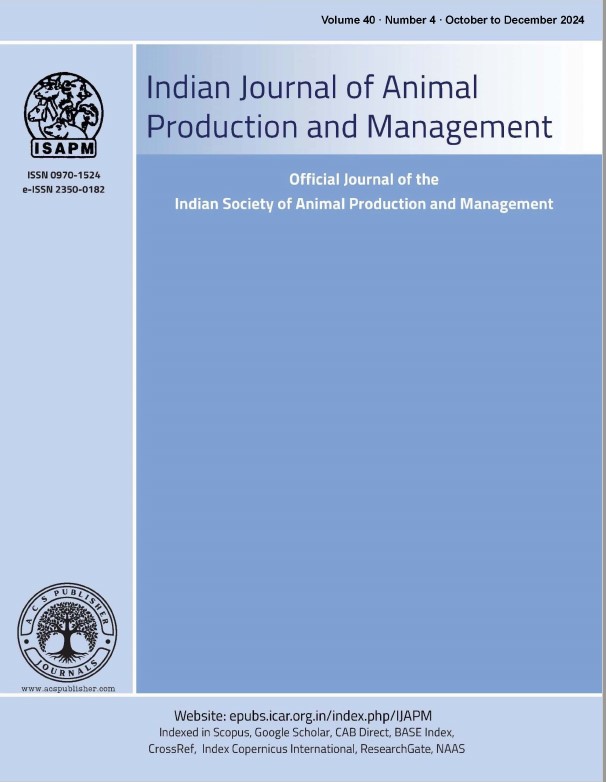EXISTING FEEDING AND BREEDING MANAGEMENT PRACTICES FOR DAIRY ANIMALS IN SURAT DISTRICT OF GUJARAT
Keywords:
Breeding, Dairy animals, Feeding, Management, Practices, Surat districtAbstract
The study was conducted purposively in Surat district to ascertain the feeding and breeding management practices followed by rural dairy animal owners. A field survey was conducted during March, 2013 to January, 2014 and data were collected from randomly selected 300 dairy animal owners through personal interview with the help of pre-tested structured schedule from five talukas selected at random. The present study revealed that all farmers adopted individual feeding system to their dairy animals and 81.67% of respondents followed stall feeding system while, only 18.33% of respondents followed stall feeding as well as grazing system. Majority (67%) of respondents cultivated green fodder crops and 64.33 and 99% respondents fed green non-leguminous and bunds grass to their milking animals, respectively. Paddy straw was major ingredient (75%) used as dry fodder. Sixty eight percent of respondents fed homemade + compound cattle feed as concentrate to their milking animals, based on milk production (62.67%), mainly after milking (57.67%). They fed concentrate to their animals after soaking in water while, 35% of respondents fed concentrates as such. Most of respondents (95%) practiced to feed green/dry fodders as such to their dairy animals. 52.33% of respondents did not fed concentrates to their young calves while, 72% of respondents fed concentrates to their heifers. They practiced to feed concentrates to their advanced pregnant heifers and 72.67% followed special feeding after calving. 58.33% of respondents provided mineral supplements to their dairy animals. All the respondents detected heat in their animals by observing the symptom of bellowing and mucus discharge (84.67%) and bred their animals by artificial insemination (89.67%) between 12-18 hours after heat detection (95.67%). About 40% respondents bred their animals after 2 to 3 months of calving and 89.33% respondents followed the pregnancy diagnosis but 59.67% did it either from Livestock Inspectors or Artificial Insemination workers after three months of breeding. Majority (54%) of respondents followed treatment of anoestrus/repeaters in their dairy animals and only 7.67% of respondents kept the breeding records of their dairy animals.

